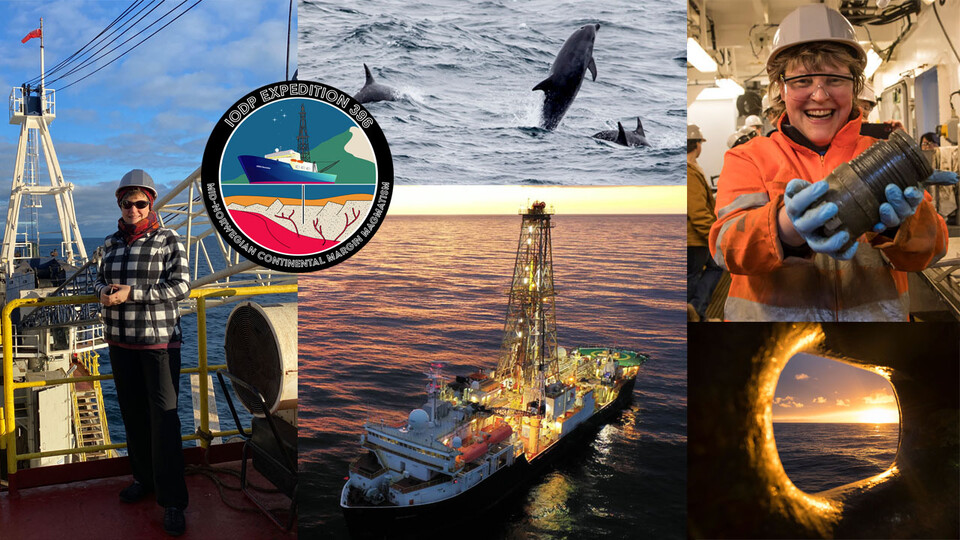
Extraction of deep-sea samples to help researchers better understand ancient volcanism
by Scott Schrage | University Communication
For geophysicist Irina Filina and fellow members of Expedition 396, time-traveling to the volcanically active sauna of prehistoric Earth meant drilling for long-cooled magma resting miles beneath the chop and churn of the North Atlantic.
It also meant 61 consecutive days of 12-hour shifts aboard the 200-foot-tall, 470-foot-long JOIDES (JOY’-dehs) Resolution, one of just two drilling ships in the world dedicated exclusively to scientific research.
From Aug. 6 through Oct. 6, the assistant professor of Earth and atmospheric sciences traded her desk at the University of Nebraska–Lincoln for the deck of the research vessel, which has served as the floating workhorse of near-continuous scientific expeditions since the mid-1980s.
Filina and nearly 100 others embarked from Reykjavík, Iceland, to extract cylindrical samples of rock and sediment from a stretch of Earth’s crust that resides beneath the North Atlantic Ocean and emerges at the western coast of Norway.
That stretch has come to interest geologists because it includes a sizable transition from oceanic to continental crust that was formed during the breakup of continents and is now completely covered by sediment. Just beneath that sediment lie major chunks of igneous rocks, once magma-hot, now stone-cold evidence of the especially active volcanism occurring tens of millions of years ago.
Much of that magma spewed forth roughly 55 million years ago, right around the time that the average global temperature shot up by about 9 degrees Fahrenheit in just a few thousand years — baking the planet with an extinction-driving heat not felt since.
“There was a lot of volcanic activity — much, much more than we currently have,” Filina said. “And we still do not understand why that amount of volcanism occurred at that time.”
For the team, that question lingers above all others. But the others are numerous: Which of several competing hypotheses actually explains what drove the volcanism? How much of the unprecedented global warming was due to magma breaching the planet’s surface versus simply penetrating and heating crust from the mantle below it? When it did breach, was it doing so underwater or while exposed to air?
Read more:
https://news.unl.edu/newsrooms/today/article/two-month-expedition-at-sea-proves-adventure-of-lifetime-for-husker/